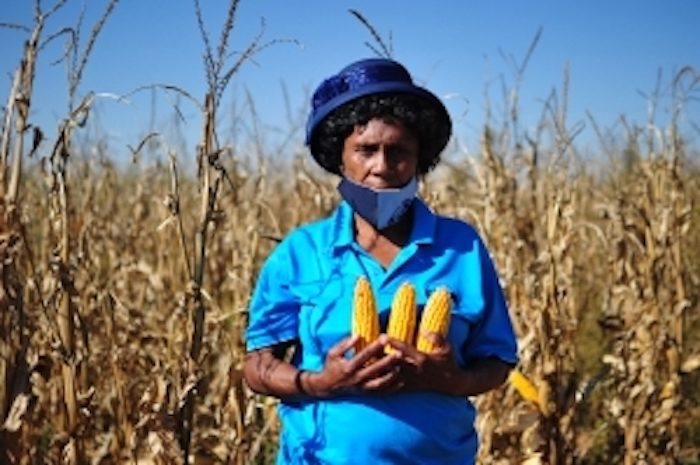A regional report based on research conducted in ten countries in Southern African Development Community (SADC) paints a positive picture of the future of conservation agriculture in Southern Africa.
The slow uptake of Conservation agriculture (CA) among farmers in Southern Africa is due partly to the structural approach within which most CA has often been promoted in countries without alignment to national development frameworks.
The report highlights that to ensure the buy-in of CA among decision makers, it is important that CA identifies with regional and national policy frameworks and strategies that seek to address farmer productivity, through Climate Smart Agriculture and Climate Resilience.
About 70 percent of the region's population depends on agriculture for food, income, and employment, contributing to the different Member States between 4 percent and 27 percent of GDP and about 13 percent of overall export earnings. Yet, many countries are already exposed to climate risks, both in their direct farming and in their produce chains.
The Regional report “Conservation Agriculture Entry Points into Regional and National Development Frameworks and Potential Investment Opportunities in Southern Africa” was conducted in 10 countries in Southern Africa, namely, Eswatini, Lesotho, Malawi, Madagascar, Mozambique, Namibia, South Africa, Tanzania, Zambia, and Zimbabwe.
War in Ukraine: Could CA be the answer to rising fertilizer prices?
CA has three main principles: minimum soil disturbance, crop diversification, and permanent soil cover, to help protect the environment and to reduce both the impacts of climate change on agricultural systems. In addition, CA makes efficient use of inputs, produces higher yields and is environmentally friendly.
Against the skyrocketing prices of fertilizer globally, adoption and scaling up CA an approach that applies precision application of inputs has never been more urgent. The Southern Africa region heavily relies on imports for its fertilizers and other agro-chemicals. The Russia-Ukraine war has exacerbated the access of fertilizer for millions of smallholder farmers in Southern Africa. If the prices remain high, there will be less demand for fertilizer which will potentially dim crop yield prospects for the 2022/23 production season.
“The rising cost of inputs due to the conflict in Europe underlines the need to use agricultural inputs more efficiently. The unfortunate part of this is that the input price rises will have the severest impact on vulnerable farming households,” said Lewis Hove, Resilience Team Leader, FAO Sub-regional Office for Southern Africa, adding that the unfolding climate change scenario in the region is making the situation even worse.
Strengthening CA partnerships
The Food and Agriculture Organization of the United Nations (FAO) has been promoting CA in Southern Africa through supporting multi-stakeholder partnerships, and strengthening coordination at the local and regional level, including supporting National Conservation Agriculture Taskforces (NCATFs) and the Conservation Agriculture Regional Working Group (CARWG). These structures are responsible for coordinating CA stakeholders to ensure harmonized messaging and advocating for the scaling up of CA at national and regional levels.
Through the project “Strengthening Coordination, Scaling Up and Governance of Conservation Agriculture in Southern Africa (SUCASA)”, FAO is working with partners in Southern Africa to overcome both policy, institutional and technical challenges to the scaling up of Conservation Agriculture (CA) in Southern Africa.
The project has strengthened the role of National Conservation Agriculture Taskforces as multi-stakeholder outreach vehicles for scaling up CA in the targeted countries, Madagascar, Malawi, Mozambique, Namibia, Lesotho, Eswatini, South Africa, Tanzania, Zambia, and Zimbabwe.
Integrating CA into regional and national frameworks
Studies have showed that CA works well under particular contexts and if implemented according to the established principles and with good management.
To ensure sustainability, CA needs to align with existing Sustainable Development goals (SDGs), regional and national development policies, frameworks and strategies for increased agricultural productivity, climate resilience, disaster risk reduction and food and nutrition security.
Collaboration between governments and stakeholders key
While countries play the role of aligning CA policies to national, regional, continental or global frameworks, stakeholders are encouraged to provide more funding and resources to boost CA adoption, and support sustainable exit strategies that leave the CA farmers with sustained interest and support in CA adoption. Research into all facets of CA adoption to provide empirically-based recommendations for scaling the practice is equally needed to determine the real economic benefits of CA.
The private sector should position itself to create market opportunities for CA agro-inputs, and enhance awareness of smallholder farmers of these opportunities, as financial institutions provide farmers with soft loans with favorable interest rates and payback periods.
Making CA work
The study suggests that for CA to be successful, different production stages under CA (planting, harvesting, shelling, value addition) have to be mechanized. CA farmers should be linked with markets so as to motivate them and improve on sustainability.
Additionally, ICT can be leveraged to create wider awareness of successes and failures of CA, and train farmers and other stakeholders in the practice. Furthermore, the farmers should have access to information via a range of sources, e.g. radio, newspapers, oral tradition, market players, extension workers, and from other farmers. Convening a regional CA technical forum is imperative to share experiences and research results and review the regional CA agenda.
The No-Till Passport series is brought to you by Martin Industries.
Since 1991, Martin Industries has designed, manufactured and sold leading agriculture equipment across the U.S. and Canada. Known for Martin-Till planter attachments, the company has expanded to include a five-step planting system, closing wheel systems, twisted drag chains, fertilizer openers and more in their lineup. Their durable and reliable planter attachments are making it possible for more and more farmers to plant into higher levels of residue.








Post a comment
Report Abusive Comment